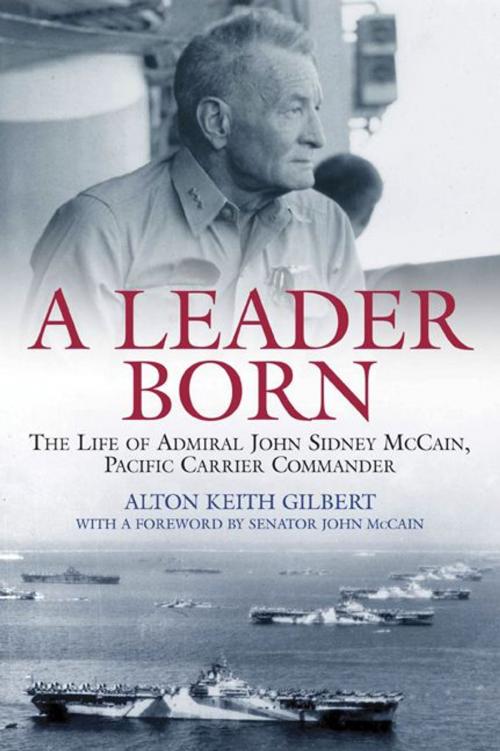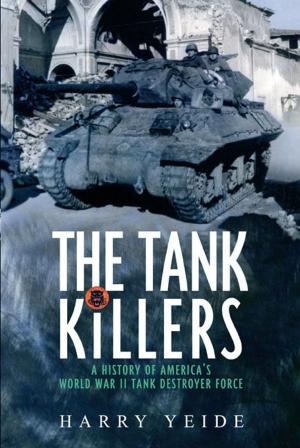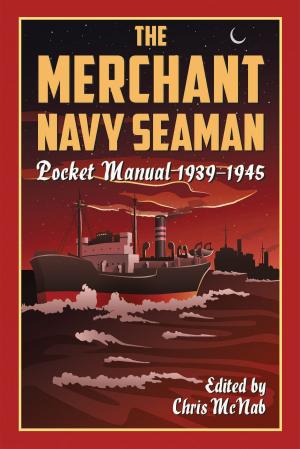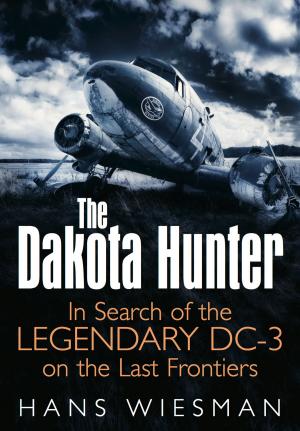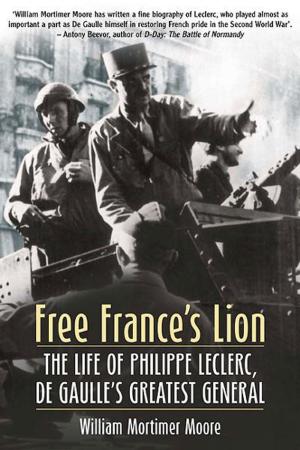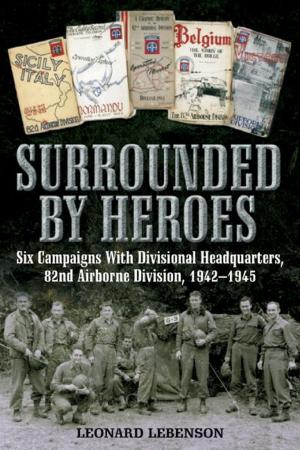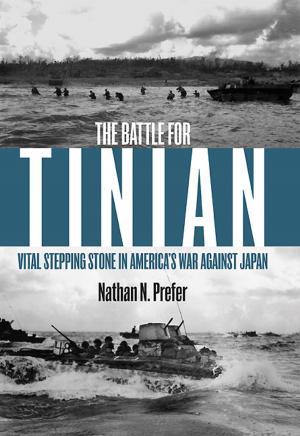Leader Born
The Life of Admiral John Sidney McCain, Pacific Carrier Commander
Nonfiction, History, Military, Naval, World War II| Author: | Alton Gilbert | ISBN: | 9781612000305 |
| Publisher: | Casemate | Publication: | August 19, 2006 |
| Imprint: | Casemate | Language: | English |
| Author: | Alton Gilbert |
| ISBN: | 9781612000305 |
| Publisher: | Casemate |
| Publication: | August 19, 2006 |
| Imprint: | Casemate |
| Language: | English |
John S. ‘Slew’ McCain was an old–school sailor. Wiry, profane, a cusser and a gambler, he reminded more than one observer of ‘Popeye.’ He was also a pioneer in the hard–hitting naval tactics that brought Imperial Japan to its knees.
McCain graduated from Annapolis in 1906 and served aboard an armored cruiser in World War I. Espying the future of naval warfare, he earned his aviation wings in 1936 and by 1939 was commander of the aircraft carrier, USS Ranger. He was thus well placed to provide a leading role in America’s cut and thrust war with the Japanese across the broad expanses of the Pacific. In 1942 he was made commander of all land–based aircraft during the campaign for Guadalcanal. Though he took his share of blame for the disaster at Savo Island, he counterattacked with every means at his disposal, to the point of commandeering the planes of the crippled carriers Enterprise and Saratoga to reinforce U.S. strength on Henderson Field.
Throughout the war, McCain prioritized fighters and single–seat dive–bombers as the best weapons to directly attack the enemy. By the time the U.S. returned to the Philippines, McCain was leading a fast carrier task force under William ‘Bull’ Halsey. When asked what he thought about his carrier commander, Halsey replied,“Not much more than my right arm.”
At the Philippines, Okinawa, and finally up to the very coastline of Japan, McCain’s carrier group destroyed thousands of enemy planes and hundreds of ships with aggressive, swarming tactics. When the Empire formally surrendered on the battleship Missouri, McCain was in the first row of U.S. officers looking on.
After Japan surrendered on September 2, 1945, McCain flew back to his home in the U.S., and died in his bed the next day—perhaps from heart failure but more probably from exhaustion. His name has lived on, however, through his son, John S. McCain II, who became commander of U.S. naval forces in the Pacific, 1968–72 (the first father and son four–star admirals in U.S. history), and his grandson, John S. McCain III, a carrier pilot who became the one of the longest held U.S. POW during the Vietnam War and currently serves as a U.S. Senator from Arizona.
Drawing upon a wealth of primary sources, including information provided by the McCain family, as well as an expert grasp of the titanic battles waged by the U.S. armed forces in the Pacific, Alton Keith Gilbert has provided the fullest account of the first Admiral John McCain’s life yet written. An unconventional leader, Slew McCain’s career was marked by courage and innovation, as he emerged from World War II as one of America’s greatest combat leaders.
John S. ‘Slew’ McCain was an old–school sailor. Wiry, profane, a cusser and a gambler, he reminded more than one observer of ‘Popeye.’ He was also a pioneer in the hard–hitting naval tactics that brought Imperial Japan to its knees.
McCain graduated from Annapolis in 1906 and served aboard an armored cruiser in World War I. Espying the future of naval warfare, he earned his aviation wings in 1936 and by 1939 was commander of the aircraft carrier, USS Ranger. He was thus well placed to provide a leading role in America’s cut and thrust war with the Japanese across the broad expanses of the Pacific. In 1942 he was made commander of all land–based aircraft during the campaign for Guadalcanal. Though he took his share of blame for the disaster at Savo Island, he counterattacked with every means at his disposal, to the point of commandeering the planes of the crippled carriers Enterprise and Saratoga to reinforce U.S. strength on Henderson Field.
Throughout the war, McCain prioritized fighters and single–seat dive–bombers as the best weapons to directly attack the enemy. By the time the U.S. returned to the Philippines, McCain was leading a fast carrier task force under William ‘Bull’ Halsey. When asked what he thought about his carrier commander, Halsey replied,“Not much more than my right arm.”
At the Philippines, Okinawa, and finally up to the very coastline of Japan, McCain’s carrier group destroyed thousands of enemy planes and hundreds of ships with aggressive, swarming tactics. When the Empire formally surrendered on the battleship Missouri, McCain was in the first row of U.S. officers looking on.
After Japan surrendered on September 2, 1945, McCain flew back to his home in the U.S., and died in his bed the next day—perhaps from heart failure but more probably from exhaustion. His name has lived on, however, through his son, John S. McCain II, who became commander of U.S. naval forces in the Pacific, 1968–72 (the first father and son four–star admirals in U.S. history), and his grandson, John S. McCain III, a carrier pilot who became the one of the longest held U.S. POW during the Vietnam War and currently serves as a U.S. Senator from Arizona.
Drawing upon a wealth of primary sources, including information provided by the McCain family, as well as an expert grasp of the titanic battles waged by the U.S. armed forces in the Pacific, Alton Keith Gilbert has provided the fullest account of the first Admiral John McCain’s life yet written. An unconventional leader, Slew McCain’s career was marked by courage and innovation, as he emerged from World War II as one of America’s greatest combat leaders.
